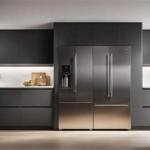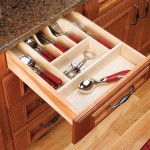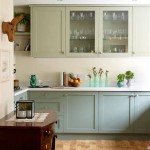Kitchen Cupboard Installation Guidelines
Installing kitchen cupboards requires careful planning and execution to ensure a professional, functional, and aesthetically pleasing result. These guidelines provide a comprehensive overview of the installation process, covering key aspects from pre-installation preparation to securing the units.
Pre-Installation Preparation: Accurate measurements are paramount. Thoroughly measure the kitchen space, noting the location of plumbing, electrical outlets, and gas lines. This information is crucial for designing the layout and ensuring the cabinets fit correctly. Verify the levelness of the floor and walls. Uneven surfaces can lead to instability and difficulty in aligning the cabinets. If significant unevenness is detected, remedial action, such as shimming or leveling, may be required. Check the condition of the walls. They must be sturdy enough to support the weight of the cabinets. If necessary, reinforce the walls before installation commences.
Layout and Design: Once measurements are taken, create a detailed layout plan. This plan should specify the location of each cabinet, including dimensions and any modifications required. The plan should also account for appliance placement and workspace considerations. Dry-fitting the cabinets is highly recommended. This process involves placing the cabinets in their intended locations without fastening them. Dry-fitting allows for visualization of the final layout, identification of potential issues, and fine-tuning of the design before permanent installation.
Essential Tools and Materials: Gather all necessary tools before beginning the installation. These typically include a drill, screwdriver, level, measuring tape, stud finder, pencil, safety glasses, and appropriate fasteners. Ensure the chosen fasteners are suitable for the wall type and cabinet weight. Acquire necessary materials such as shims, fillers, and sealant. Shims compensate for uneven surfaces, fillers bridge gaps between cabinets and walls, and sealant provides a waterproof barrier and a finished appearance.
Base Cabinet Installation: Begin by installing the corner base cabinet. This cabinet serves as an anchor for the remaining units. Use a level to ensure the cabinet is perfectly plumb and level, using shims as needed. Secure the cabinet to the wall studs using appropriate screws. Continue installing the remaining base cabinets, working outwards from the corner unit. Maintain consistent spacing between cabinets and ensure each unit is level and plumb. Join adjacent cabinets together using screws or cabinet connectors, ensuring tight and secure connections.
Wall Cabinet Installation: Once the base cabinets are installed, proceed with the wall cabinets. A temporary support structure may be beneficial to hold the cabinets in place during installation. Begin with a corner wall cabinet, ensuring it is level and plumb. Secure the cabinet to the wall studs using appropriate screws. Install the remaining wall cabinets, working outwards from the corner unit, maintaining consistent spacing and alignment. Join adjacent wall cabinets together in the same manner as the base units.
Securing and Finishing Touches: After installing all cabinets, reinforce the connections between adjacent units by adding screws from the inside of the cabinets. This provides additional strength and stability. Install fillers to bridge gaps between cabinets and walls, creating a seamless appearance. Apply sealant around the edges of the cabinets where they meet the walls, providing a waterproof barrier and a finished look. Finally, install doors and drawers according to the manufacturer’s instructions. Adjust hinges and drawer slides to ensure proper function and alignment.
Plumbing and Electrical Considerations: If plumbing or electrical work is required, it is recommended to consult with qualified professionals. Ensure all plumbing and electrical connections are compliant with local building codes. Disconnecting and reconnecting appliances should be performed with caution and according to manufacturer guidelines. Before commencing any plumbing or electrical work, ensure the power supply is disconnected for safety.
Safety Precautions: Throughout the installation process, prioritize safety. Wear appropriate safety gear, such as safety glasses and gloves. Use caution when operating power tools and follow manufacturer instructions. Ensure the work area is well-lit and free of obstacles. When working at heights, use a stable platform or ladder. If unsure about any aspect of the installation, consult with a qualified professional.
Cabinet Care and Maintenance: Proper care and maintenance will prolong the life of your kitchen cabinets. Clean cabinets regularly with a mild detergent and a soft cloth. Avoid abrasive cleaners and harsh chemicals. Inspect and tighten screws periodically to maintain structural integrity. Address any spills or leaks promptly to prevent water damage. Following these guidelines will help ensure the longevity and beauty of your kitchen cabinets.
Variations in Installation: These guidelines provide a general overview, and specific installation procedures may vary depending on the cabinet design, wall type, and manufacturer instructions. Always consult the manufacturer’s instructions for specific guidance. Various specialized cabinet types, such as corner cabinets or angled cabinets, may require specific installation techniques. Adapt these guidelines to suit the specific requirements of each project.
Professional Installation: While installing kitchen cabinets can be a rewarding DIY project, complex installations or those requiring specialized skills may benefit from professional expertise. Consider consulting with a qualified contractor if the installation involves intricate designs, challenging wall conditions, or integration with complex plumbing or electrical systems. A professional installer can ensure the job is completed correctly and efficiently.
Setting Kitchen Cabinets Jlc

Do It Yourself Kitchen Cabinets Installation Design Layout Kosher Cabinet

Kitchen Cabinet Installation Guide Step By

Kitchen Cabinet Installation Guide Step By

How To Install Upper Cabinets Like A Pro Cabinetselect Com

Kitchen Cabinet Installation Guide 2024 Installing Cabinets Design

A Guide To Kitchen Installation Myjobquote Co

Assembly Amp Installation Instructions Cabinets To Go

2024 Kitchen Cabinet Installation Guide Corner Cupboard Ideas Check More At Http Www Plan Cabinets Cupboards

How To Install Kitchen Cabinets Whole Cabinet Supply
Related Posts








